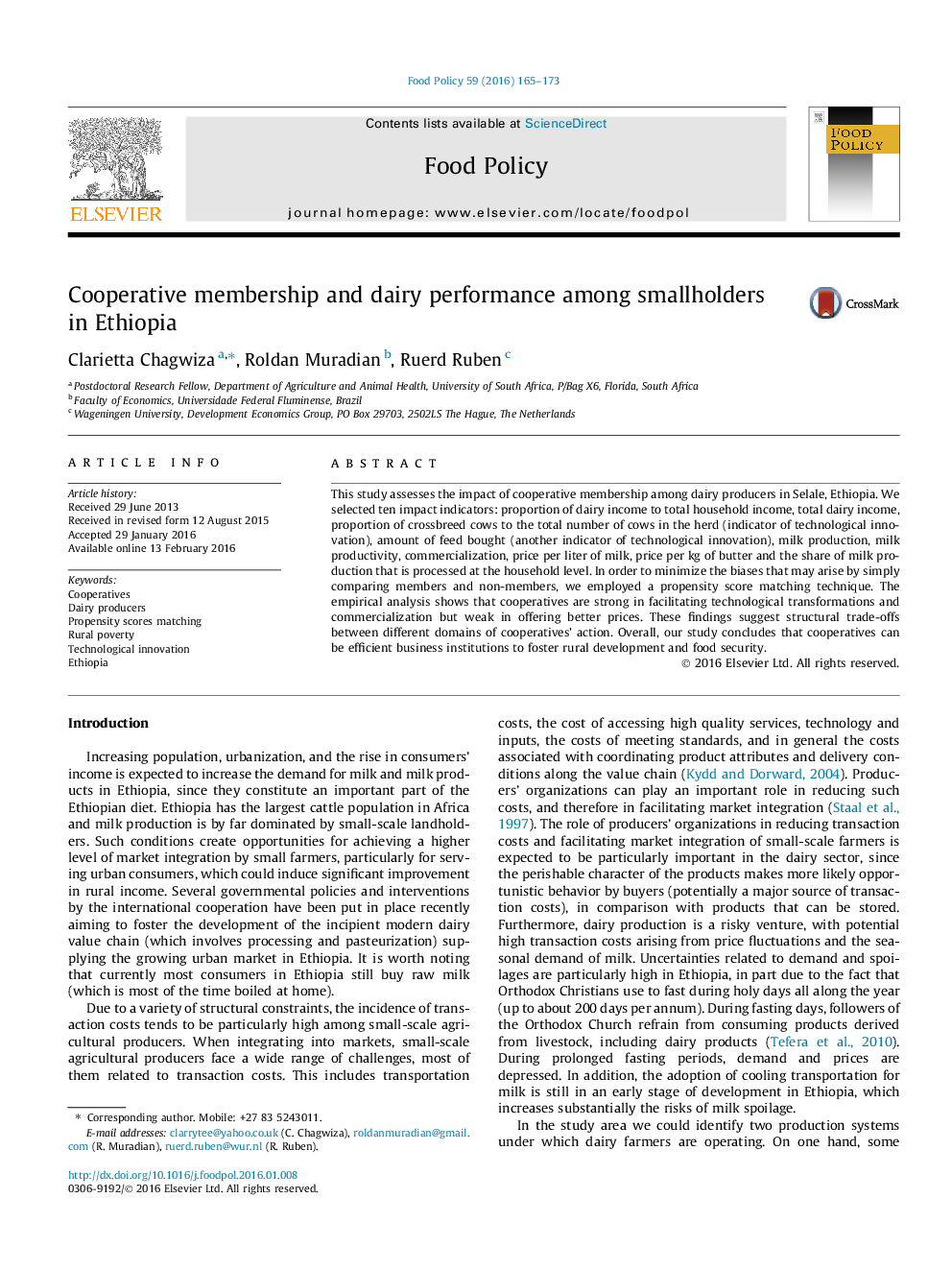| Article ID | Journal | Published Year | Pages | File Type |
|---|---|---|---|---|
| 5070290 | Food Policy | 2016 | 9 Pages |
â¢We assess the impact of cooperative membership by comparing members and non-members.â¢Cooperatives can be instrumental in poverty alleviation among dairy farmers.â¢Cooperatives provide a suitable environment for dairy intensification.â¢However, there is a trade-off between cooperative functions, particularly technological transfer and price bargaining.
This study assesses the impact of cooperative membership among dairy producers in Selale, Ethiopia. We selected ten impact indicators: proportion of dairy income to total household income, total dairy income, proportion of crossbreed cows to the total number of cows in the herd (indicator of technological innovation), amount of feed bought (another indicator of technological innovation), milk production, milk productivity, commercialization, price per liter of milk, price per kg of butter and the share of milk production that is processed at the household level. In order to minimize the biases that may arise by simply comparing members and non-members, we employed a propensity score matching technique. The empirical analysis shows that cooperatives are strong in facilitating technological transformations and commercialization but weak in offering better prices. These findings suggest structural trade-offs between different domains of cooperatives' action. Overall, our study concludes that cooperatives can be efficient business institutions to foster rural development and food security.
